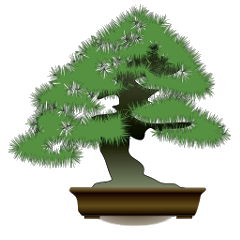Here are some of the errors that are most commonly committed by inexperienced bonsaist:
# 1 Error: forget to water
Since the Bonsai are planted in small pots, they do not have many reserves in terms of nutrients and water. If you forget to wet a Bonsai until the soil dries completely, the tree roots dry out and die. In a few days the leaves will wither and fall. If the roots have dried up completely it is not possible to save the tree, but if they have not dried completely it is possible to try to save it by placing it in a place sheltered from the sun and wind and returning and watering it correctly.
So, how often do you need to water? In reality it depends on the species of the tree and the soil in which it is planted. In general it is necessary to check the soil and wet it when it is slightly dry to the touch. Most low-cost Bonsai are planted in clay soil (especially if they are imported from China); this earth does not absorb water well and it can happen that when you water the water it ends up in the saucer, rather than in the ground. We must therefore carefully water it. After wet the bonsai, wait a few minutes, and then wet it again, to make sure that the entire soil is irrigated.
# 2 Error: put an outdoor bonsai inside
Most Bonsai are outdoor plants. For example, the Juniper, which is one of the most common Bonsai for beginners, is an outdoor tree. When placed inside, the needles turn yellow and the tree slowly dies.
In general, it is necessary to place an indoor Bonsai near (within one meter) from a window preferably exposed to the south and an outdoor Bonsai in a bright spot away from the strong wind.
# 3 Error: too much water
Some substrates retain water very well and in this case, excessive watering can be a real problem. If your Bonsai is planted in a soil with strong water retention and is constantly wet, the roots will begin to rot and die. Forgetting to water a tree can kill it in a few days, while death from excessive watering will occur in several weeks.
# 4 Error: lack of light
Most, if not all, indoor bonsai are tropical trees. This means that they need a lot of light, and most homes don’t have enough.
Indoor Bonsai should be placed near (within one meter) from a window preferably facing south.
# 5 Error: haste
Some beginners try to change the appearance of their tree every two weeks and there is no need to be an expert to understand that this practice is not good. Big changes to your Bonsai (such as repotting or drastic pruning) should be done at most once a year, at the right time. In the rest of the year it is enough to limit yourself to ordinary care and to prune it to keep it in shape (“maintenance” pruning).


